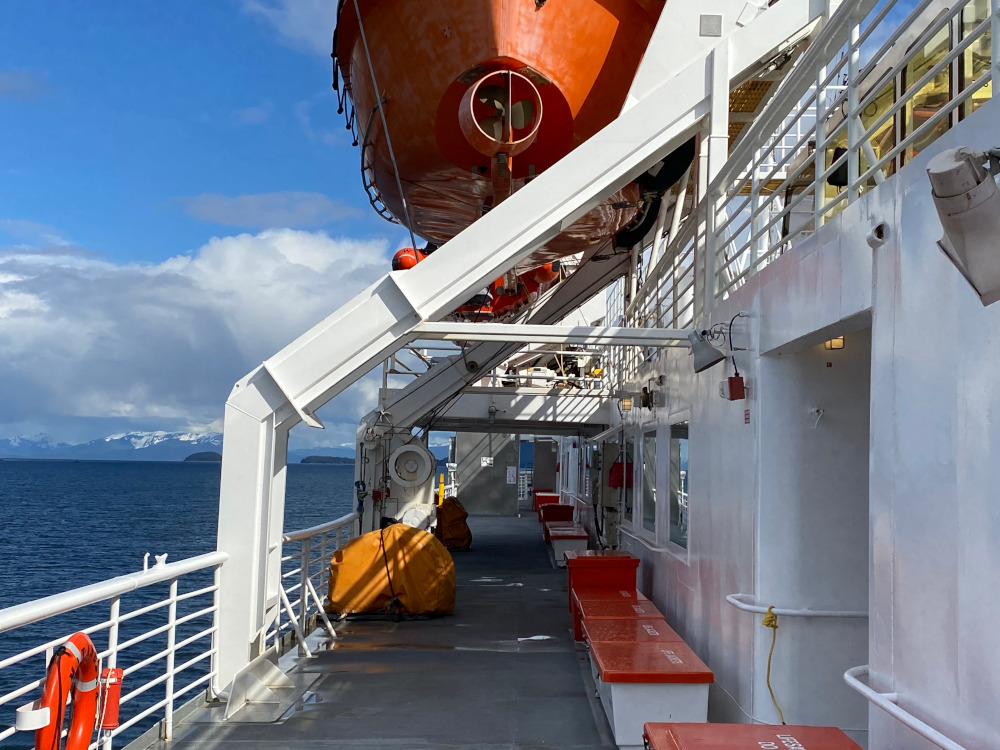
What’s a minimum level of service that’s acceptable for the state’s marine highway system? That’s a fundamental question a new ferry oversight board could be grappling with this year.
The legislature last year created the Alaska Marine Highway Operations Board to make recommendations on the direction of the state ferry system. It held its first meeting in February.
The board is tasked with providing input on a short-range plan for vessels, docks and terminals, updated annually, along with a longer and more comprehensive document that steers decisions in decades to come.
Board chair Shirley Marquardt, a top ferry official under Gov. Bill Walker, said the system needed to make decisions well before a long-term plan is complete.
“I guess I would just want to be sure that the development of this plan, which is going to happen whether we like it or not, doesn’t stop the Alaska Marine Highway System from making needed changes and be able to present those changes to the legislature, to the administration,” Marquardt said.
That longer term planning process could take one to two years or more and could address which ports to serve, types of new ships to build and how to operate the passenger and vehicle service over thousands of miles of Alaska’s coastline. But it can also include more immediate decisions on retiring aging vessels or making repairs.
Matanuska captain Keith Hillard represents the three crew unions on the oversight board. He talked about gaining back the trust of ferry passengers by providing basic service.
“For a tight budget or lean years, you have to define what the minimum level of service is, is to keep communities happy and supplied for medical, and just have a ship touch bases with them whether it be on a monthly or bi-weekly basis,” Hillard said. “I really think we need to look at that to help formulate that long-term plan.”
It’s not the first long-term planning for the ferry system. A regional transportation plan nearly two decades ago resulted in the construction of fast catamarans that have since been sold. Another plan that didn’t make it past the draft stage in 2014 focused on constructing new roads to connect ferry routes.
In 2020, a task force created by Governor Mike Dunleavy recommended reducing the size of the fleet, forward funding ferry operations and the creation of an executive board. The state has retired some of its aging vessels and it’s starting the process of replacing the 57-year-old Tustamena, which serves Homer, Kodiak and Southwest communities out to Unalaska. Alaska built two new ferries in 2019 without crew quarters needed for longer voyages. It’s adding crew quarters to one of those, the Hubbard, and that should be completed in October. And most of the board sounded supportive of adding that space on its sister ship the Tazlina. But board vice chair Wanetta Ayers of Anchorage wasn’t ready to make a recommendation on that.
“I think we’re headed down the road of doing the same thing that we’ve always done, which is over-building vessels and not really think about smaller more flexible vessels,” Ayers said.
The board also heard from ferry passengers, freight customers and advocates, who called for increased service and building new ships.
Southeast Conference executive director Robert Venables asked for more urgency in planning to prepare for spending ferry funding in the 1.2 trillion dollar infrastructure bill Congress approved last year.
“Really you know at what point can recommendations be made to construct more ferries?” Venables wondered. “I see $3 million dollars for a design to start next year but I don’t see any construction of new ferries. And our obsession should be new hulls in the water. Because you have a billion dollars to make recommendations on and I hope it goes toward new ferries soon.”
Patricia Phillips of Pelican urged the board to consider a similar-sized and more efficient ferry to replace the ferry LeConte to service small, rural communities in the northern panhandle.
Seth Stewart owns Yakobi Fisheries, a seafood processing company in Pelican. He asked for regular service by a ferry that can carry vehicles.
“Yakobi you know we ship a lot of product in and out of Pelican, supplies in, product out, people in and out on the ferry system and we depend on that as a business but also as a business it’s not only about the money that’s coming in out but it’s also about the people and to do what it is that we do out in Pelican we need the infrastructure of Pelican there,” Stewart explained, adding, “And that takes people. And often in the wintertime it’s hard to get supplies in and out of Pelican without some kind of a roll on roll off service.”
The Department of Transportation also hopes to make some decisions about modernizing the fleet. Specifically that means timelines for retiring the Matanuska and Kennicott and whether to retire the ferries Aurora and LeConte. The Marine Highway could build two new mainliners in the next decade and has to decide if those follow the same design as a replacement planned for the Tustamena.
In the shorter term, the Marine Highway is making dock modifications to accommodate the new Alaska Class Ferries.
The ferry system is also planning to restart service to Prince Rupert, British Columbia by June 23. That stopped in October 2019 over a requirement for law enforcement protection for U.S. customs staff in the Canadian port.
The board has more online meetings planned this spring along with an in-person meeting in Ketchikan early next month.











